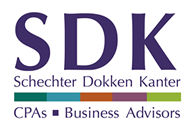SECURE Act 2.0 | A Review, Part 1
With the news that the SECURE Act 2.0 has now been passed as a part of the omnibus spending package we wanted to highlight some of the changes that will be coming for retirement plans. Below is a summary of a few of the major provisions, the date they will be effective, and a summary of what will change.
Increased Age for Required Minimum Distributions
The age used to determine beginning dates for RMDs increased in two stages. From the current age of 72 to 73 for those who turn age 72 after 2022, and to age 75 for those who turn age 74 in 2032.
Starting January 1, 2023, the new age for starting RMDs has been increased to age 73. The age will then increase to age 75 starting on January 1, 2033.
Reduced Excise Tax on Missed RMDs
Under current law, a missed RMD payment is subject to a 50% excise tax on the amount that was missed. Under this act, the penalty is reduced to 25%. In addition, if the failure to take a RMD meets further conditions the excise tax is reduced to 10%. This is effective for tax years after December 29, 2022.
Indexing IRA Catch-up Limits
Currently catch-up contributions to an IRA are set at $1,000 and not indexed for inflation annually. The catch-up contributions will be indexed for inflation annually starting in 2024.
Roth Plan Distributions Rules
Beginning in 2024, designated Roth balances under a retirement plan will be excluded from the RMD calculation.
Higher Catch-up Contributions for Deferrals
Starting in 2025, for individuals who are ages 60-63 the catch-up contribution will be increased to the greater of $10,000 or 50% more than the regular catch-up amount. This amount will be inflation-indexed after 2025.
Catch-up Contributions for Higher Compensated Employees
Currently, employees can determine whether they would like their catch-up contributions to be made on a pre-tax or Roth basis. This will be changed for employees with compensation exceeding $145,000 (indexed annually for inflation). Effective for tax years after December 31, 2023, all employees who make more than the indexed compensation limit will have their catch-up contributions mandated as Roth contributions. In other words, these catch-up contributions will not be able to be pre-tax and will not reduce your taxable income.
Expansion of Automatic Enrollment
401(k) and 403(b) plans will be required to have an automatic enrollment provision. The initial enrollment amount must be at least 3%, but not more than 10%. Each year after that amount is automatically increased by 1% until it reaches at least 10%, but no more than 15%. All 401(k) and 403(b) plans that were established prior to December 29, 2022, are grandfathered and do not need to add this provision. There is also an exception for SIMPLE 401(k) plans, small businesses with 10 or fewer employees, new businesses that have been in business for less than 3 years, church plans and governmental plans. For plans impacted, this new provision will be effective for plan years beginning after December 31, 2024.
Improved Plan Coverage for Part-Time Workers
The original SECURE Act had a provision that all long-term part-time workers had to be included in the deferral portion of the plan if they had 3 consecutive years of service for which they worked at least 500 hours. This new rule would reduce the 3-year requirement to 2 years. This is effective for plan years beginning after December 31, 2024.
Connect With SDK
There are many more provisions contained in SECURE 2.0 that will have an impact on IRAs and retirement plans. We plan to highlight more changes in articles to come. If you have any questions on how this may affect you or your plan, please reach out to Nicole Brown or Cole Hegstad at SDK and they will be happy to assist you!


